Silver Surfer: Black Is a Trippy, Existential Story About Preserving Light in the Darkness (Review)
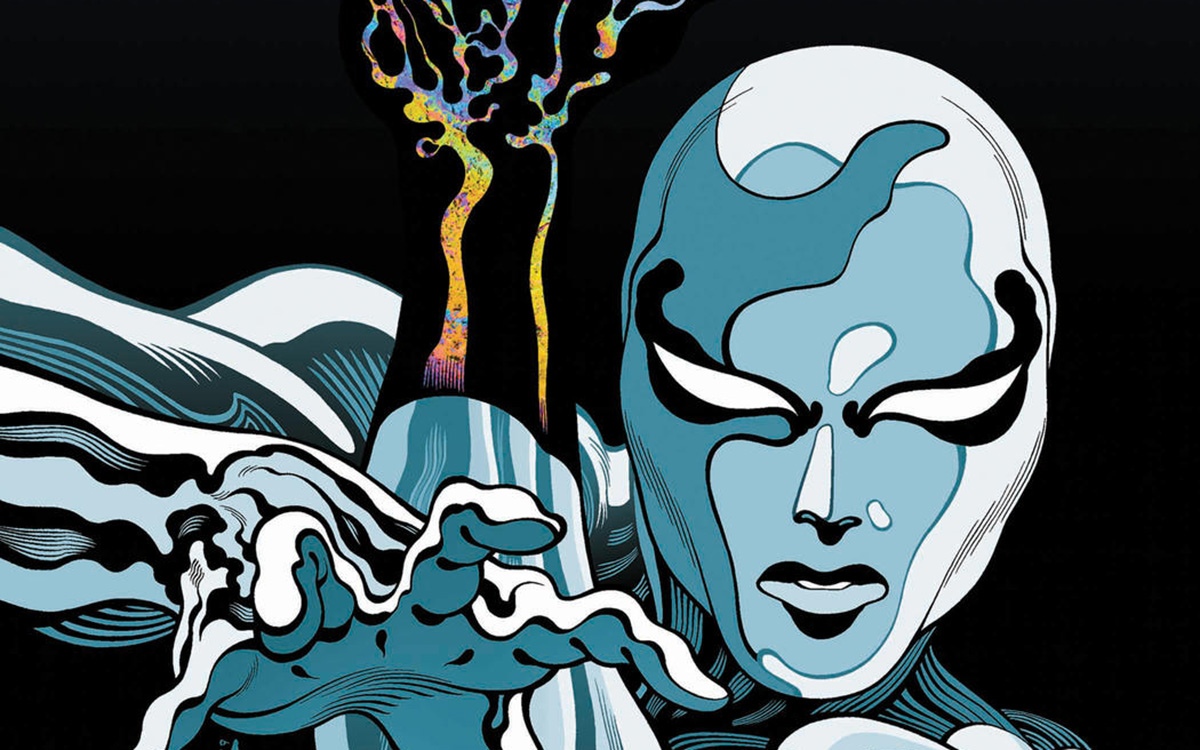
Before I begin my Silver Surfer: Black review in earnest, a little note: Due to its larger size, I have no idea how I’m going to display this Silver Surfer: Black “Treasury” edition on the shelf alongside the rest of my comics. But I honestly don’t care because the larger page size makes for such an enjoyable reading experience, especially when it comes to taking in all of Tradd Moore’s stylish artwork and Dave Stewart’s rich colors.
Speaking of Moore’s artwork, I’d wager that it’s the most divisive aspect of Silver Surfer: Black, and I admit, it took me aback when I first saw a preview several months ago. It’s incredibly surreal and psychedelic, and given the way that Moore distends and distorts the Surfer’s body, even borders on grotesque at times. It’s certainly the most unique visual depiction of the Surfer that I’ve seen in a long time, but it does take some getting used to.
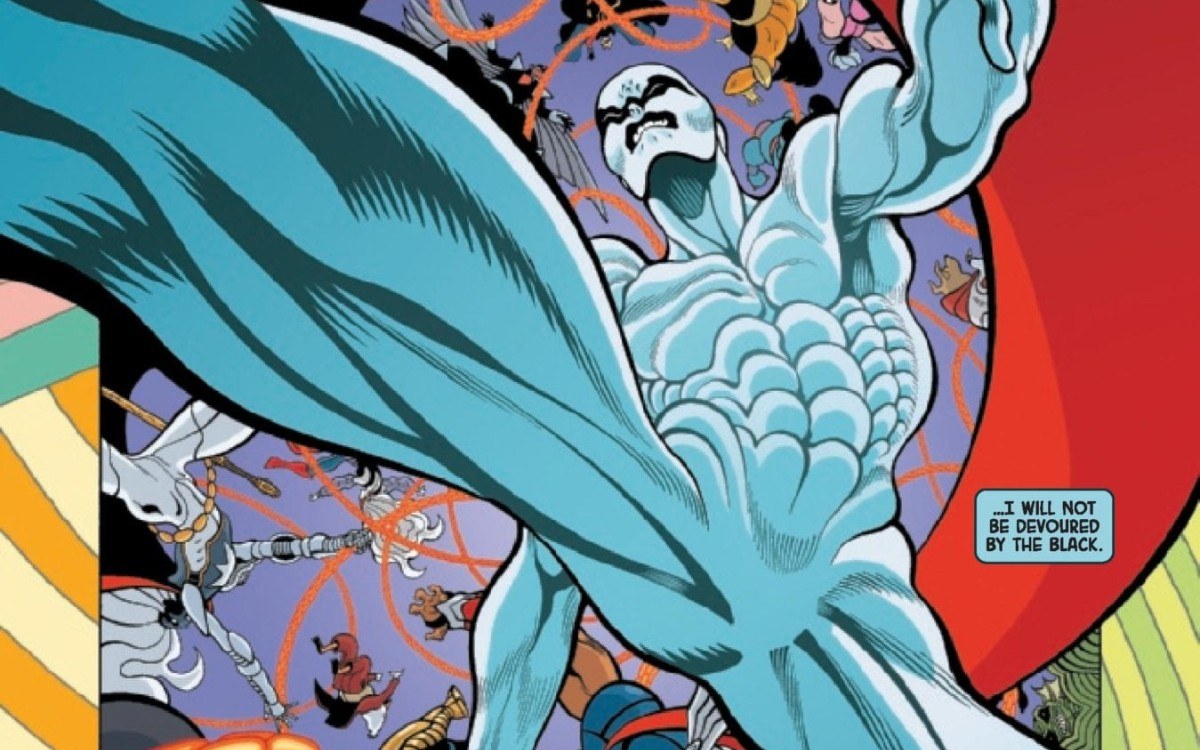
Moore’s artwork ultimately proves captivating, though — and quite apropos for a trippy story by Donny Cates that finds the Sentinel of the Spaceways trapped at the beginning of the universe and battling a dark god. It also lends an interesting physicality and, dare I say, even sensuality to the Surfer — something I’d never really considered.
But perhaps most importantly, it results in some of the most stunning and distinctive visuals I’ve ever seen in a Silver Surfer comic, such as this gorgeous two-page spread of the Surfer confronting his former master, Galactus, in a blood-soaked hellscape.

Note: The following contains potential spoilers for Silver Surfer: Black.
As for the story, Silver Surfer: Black spins out of the events of the current Guardians of the Galaxy run (also written by Cates). The Surfer and various other heroes have been trapped in a black hole created by the followers of Thanos. Though he’s able to help the other heroes escape with his Power Cosmic, the Surfer finds himself sucked down into the abyss.
Transported billions of years into the past and left in a greatly weakened state by the ordeal, the Surfer notices that the newly born universe is slowly being devoured. Searching for the source of this encroaching darkness, he arrives on a shadowy planet that contains a massive alien portal. Forced to fight the portal’s bizarre guardians, the Surfer uses the remnants of his Power Cosmic to create a small star that blazes against, and beats back, the darkness — and further weakens the already drained hero.
Which is when the true villain of Silver Surfer: Black is revealed to be Knull, the dark god of the symbiotes (which include classic Spider-Man foes Venom and Carnage).
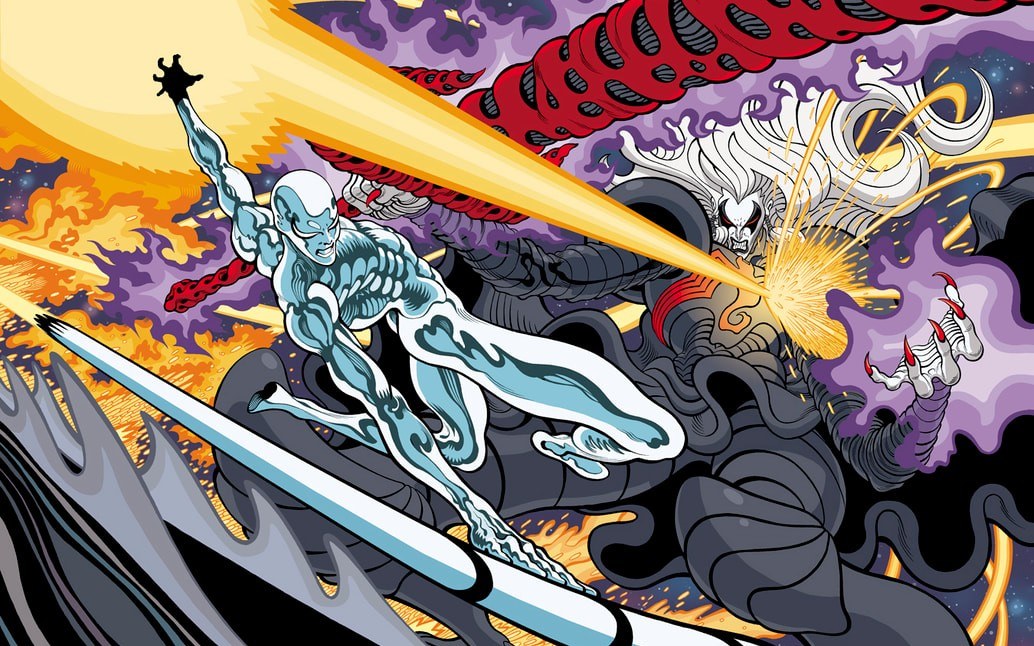
What follows is an existential (in true Surfer fashion) story of fighting the darkness within and without, even — and especially — when it seems entirely pointless to do so. The Surfer continues to lament his role in the decimation caused by Galactus, encounters a young version of Ego the Living Planet (which results in some of the comics’ other arresting visuals), and even discusses ethics with the man who will eventually become his master.
Since Knull is a god and can never truly be defeated, only held at bay for a time, the Surfer is constantly faced with a simple, overwhelming question: What’s the point of sacrifice, hardship, and attempting to live according to one’s principles when it’s all going to be swallowed up by the darkness, anyway?
It’s clear that Donny Cates is trying to spin a tale that walks the line between kick-ass cosmic action and thought-provoking philosophizing. And for most of Silver Surfer: Black, he walks the line pretty well. I admire the ambition splashed across every single page, and Cates’ heart is definitely in the right place. (In an afterword, he explains how he wrote the final issue in response to Stan Lee’s death, as a way to pay his respects to Stan the Man.) But in the final issue, the storyline grows increasingly convoluted as Cates raises the stakes, to the point of even potentially undermining the story.
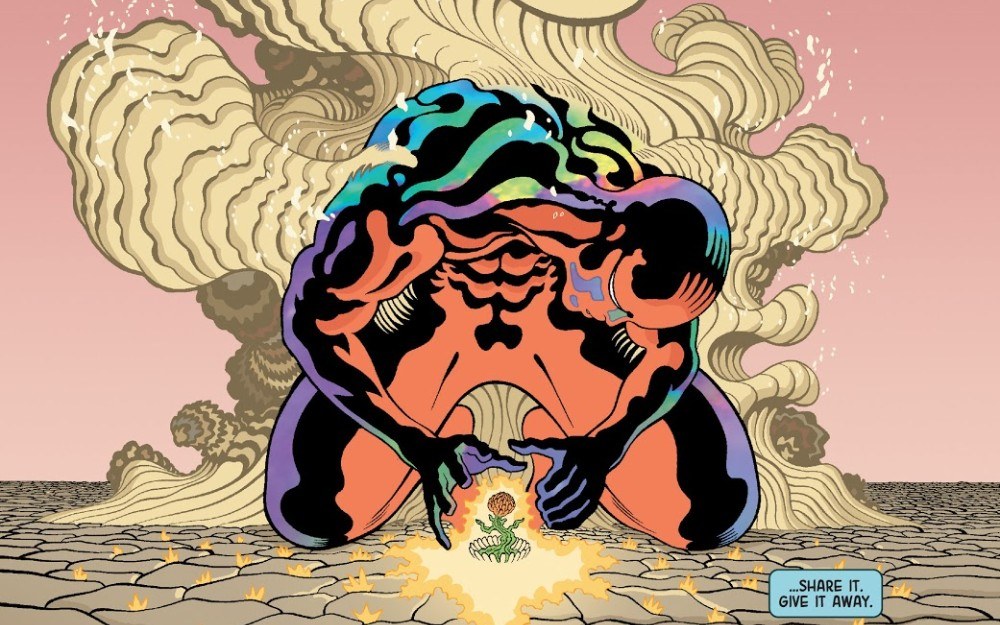
At the series’ end, the Surfer defeats Knull (for the time being, anyway) but once again, his heroism costs him everything. With Ego’s help, he uses the last vestiges of his Power Cosmic to spread life-giving seeds throughout the universe, beginning with the planet that will eventually become his own home of Zenn-La — and then fades away. His essence is left to drift throughout the cosmos, eventually bringing life into being on other planets. As he does so, he makes the following statement:
Your shadow cannot be erased. You cannot defeat the dark. But you can find the light inside of you. Protect it. Keep it from harm. Care for it. For it will be fragile. And then, when it is strong… share it. Give it away. Shine it down upon those still trapped in the shadows. And in time… perhaps… the brilliance of your light will outshine the void within. And there, bathed in flame, you will be forgiven.
Depending on how canonical Silver Surfer: Black ultimately turns out to be, the Surfer is now responsible for creating life, not just on Zenn-La, but on countless other planets as well, including the planets that his master Galactus will eventually consume. The creation of life through his own death balances the cosmic scales, finally absolving the Surfer of his sins as Galactus’ herald.
Over eons, my atoms fall like seeds scattered across the galaxy. Giving life to those planets I watched die. My consciousness scattered. I am aware of their mighty breath giving chase to the winds of infinity. Over and over, world across world, I have become such wondrous things. And then, as these planets blossom into the black, as they emerge and seed back into the great abyss, slowly, over endless millennia… I am remade. And in so doing, I remember who I am. Who I have become.
I am Norrin Radd. Creator and orphan son of Zenn-La. I am a noble light in great unending darkness. I am a friend. An ally. A lover. To most, a savior. I am known by many, universe-wide, as the Silver Surfer. The sentinel of the spaceways. The herald unchained. But not death. No longer that. The darkness I have given, now… balanced with the light I have shared.
(I wonder how this particular trip by the Surfer to the beginning of the universe jives with a similar trip taken by the Surfer in Dan Slott and Mike Allred’s Silver Surfer series. In Slott and Allred’s story, the Surfer uses the essence of his beloved Dawn Greenwood to create the fledgeling universe’s first light, and even reconstitutes the Power Cosmic’s energy signature in her honor.)
It could be argued that by creating the very life that Galactus will eventually devour in a few billion years’ time, the Surfer plays an even bigger role in facilitating the atrocities that he was seeking to be absolved of in the first place. Then again, I appreciate the underlying premise of Silver Surfer: Black that life and existence is its own justification.
In an interesting twist on the “would you kill baby Hitler?” conundrum, the Surfer has an opportunity to kill Galactus before he’s consumed a single planet. After a conversation with Galan of Taa (the space explorer from a previous universe who would eventually become Galactus), the Surfer decides to not murder Galactus; as Galan himself points out, one cannot defeat the dark with darkness.
This rejection of situational ethics brings to mind the end of Denis Villeneuve’s masterful Arrival, where the main character (played by Amy Adams) decides to still have a child even though she knows that same child will eventually die. Even with the potential of death and suffering — or the eventual consumption by a god-like world-devouring entity — life still has intrinsic value and meaning. Existence, Cates seems to be saying throughout Silver Surfer: Black, is always better than non-existence, as represented by Knull.
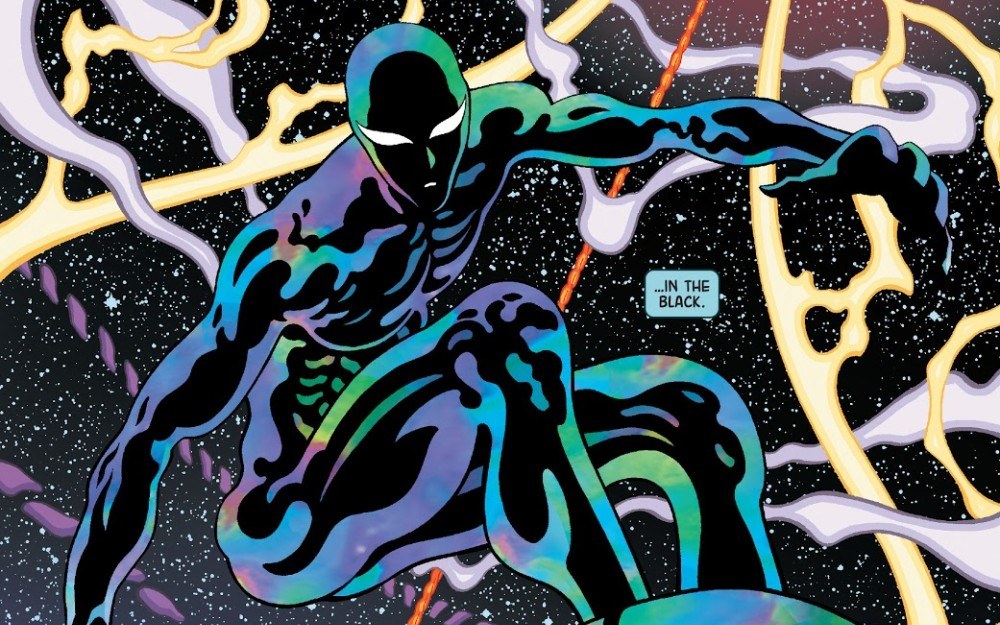
At the end of Silver Surfer: Black, the Surfer returns, finally absolved of all his sins. However, he is no longer the silver-skinned cosmic hero, but rather, as black as the void through which he soars.
This seems a pretty clear allusion to the black Silver Surfer that appears in Cates’ recently concluded Thanos series; there, the Mjölnir-wielding Surfer battles Thanos at the end of the universe, having finally proven himself worthy of the magic hammer. But seeing as that was an alternate future that’s eventually undone, the conclusion of Silver Surfer: Black leaves open questions of where the Surfer goes from here.
If he’s truly — and even physically, it seems — absolved of his cosmic sins, what’s next? And can you even have a Silver Surfer comic in which the titular character isn’t somehow brooding and agonizing over his past sins?
Of course, because this is comic books we’re talking about, future writers and artists can always retcon Silver Surfer: Black and find a new way to bring life to the Marvel universe — and put the Surfer through the wringer. But until then, Cates, Moore, et al. have delivered an epic Silver Surfer tale with a truly distinctive look and aesthetic unlike anything else out there.